23 Aug Learn the Secrets of the Great Wheel with Martha Owen
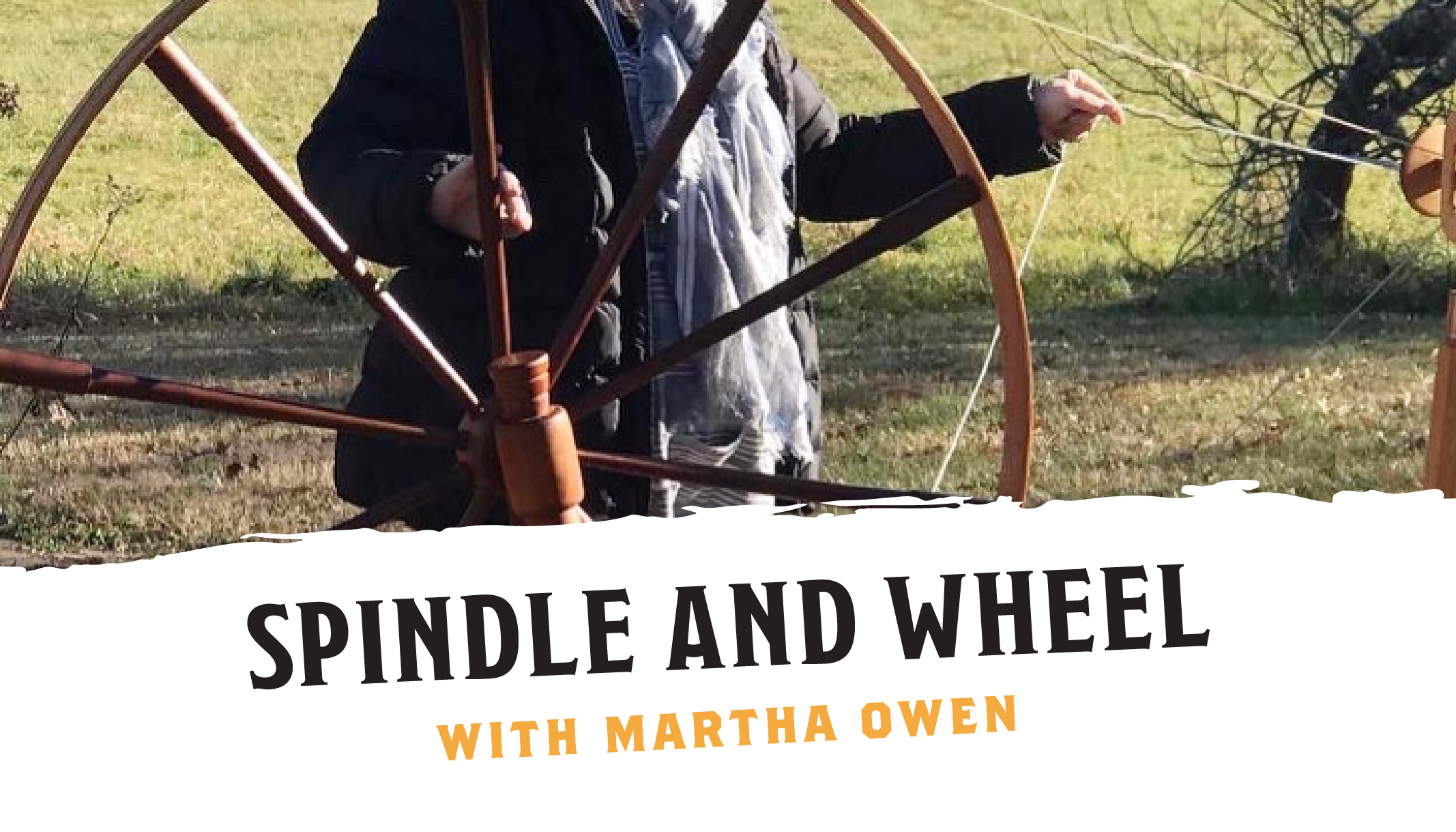
If you’ve been to the Folk School, you’ve probably seen Martha Owen around, whether it was as an instructor in the Wet Room, serenading us at Morning Song, or playing in the dance band on Tuesday nights. Drawing on her love of all things sheep and wool, Martha will be teaching “Spindle and Wheel,” a long weekend class, this winter from December 5-8. This class is a perfect introduction to spinning on wheels with a spindle point, also called great wheels, walking wheels, or muckle wheels.
Read more about Martha and her class in our interview below! Interested in her class? Register today to secure your spot.
JCCFS: Tell us a bit about yourself. How long have you been a part of the Folk School community?
MO: I’m a Creative Programming Assistant here at the Folk School, specializing in spinning, knitting, crochet, felt making, dyeing, and surface design. My adventure in spinning and natural dyeing began here in 1978, and I’ve been teaching spinning, natural dyeing, and knitting design since 1984. Since 1980 my extended family has included sheep (currently Corriedale x Blue Faced Leicester and Shetland) and French angora rabbits. I’m also a banjo player and am known to tell a story or two!
It is interesting to be doing this as long as I have and to watch the conversation turn from “why do you have sheep anyway?” to meeting folks old and young who are using words like “traceable” and “sustainable.” I have been keeping sheep, improving my little place in the world, using them, and finding interesting facts connected with them for a long time now. My interests start from the time the first people started walking the earth and the sheep followed them, up until to now. There are so many parts to the art of making yarn that it never gets old for me. And we can sing while we spin!
JCCFS: You’re teaching “Spindle and Wheel” later this fall. What kind of equipment will students be using?
MO: Students will learn to spin on a great wheel, the wheel of Appalachia, which also appears all over in the world. We will prepare appropriate wool by hand carding and learn how to spin off the point.
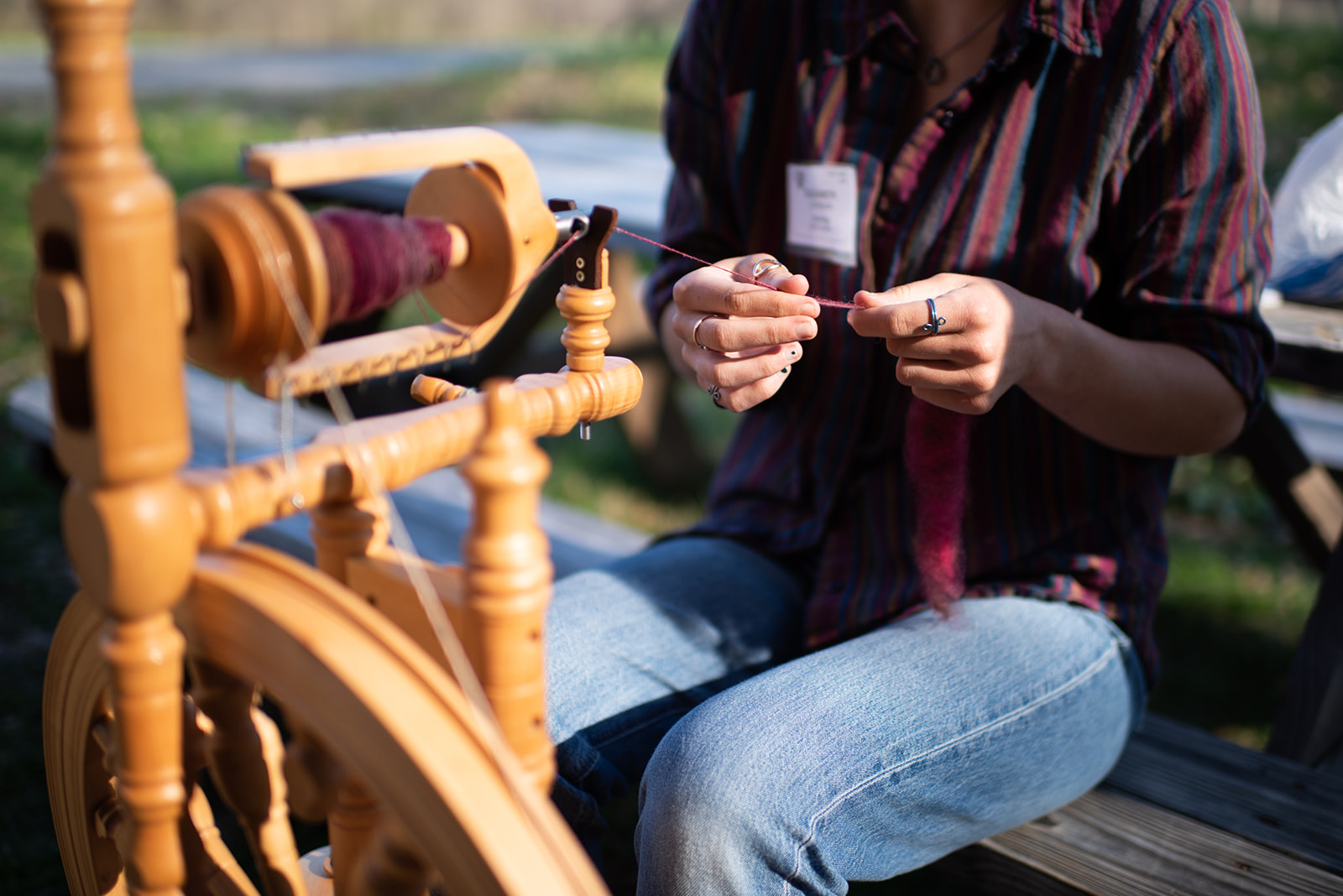
Students from one of Martha’s previous spinning classes
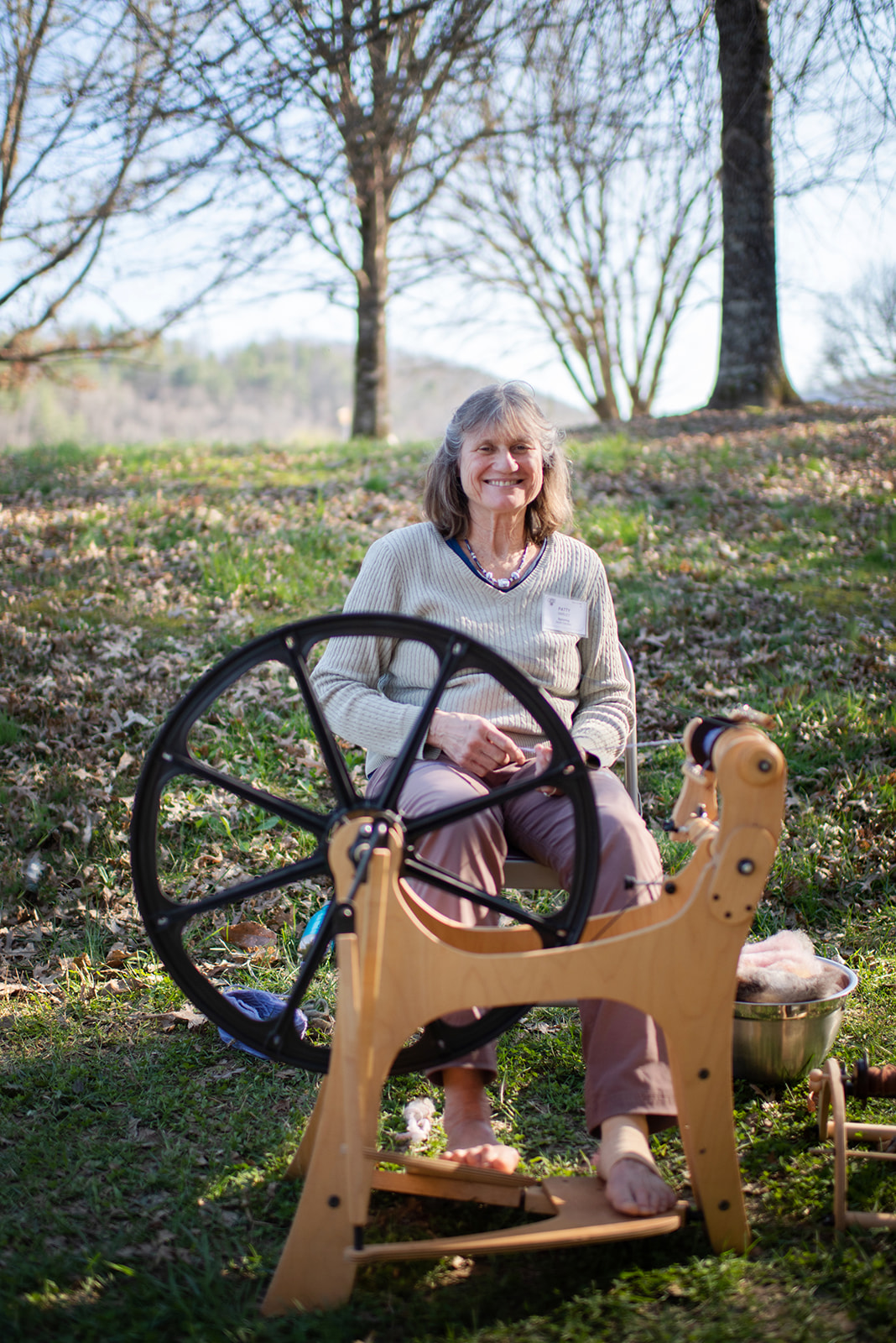
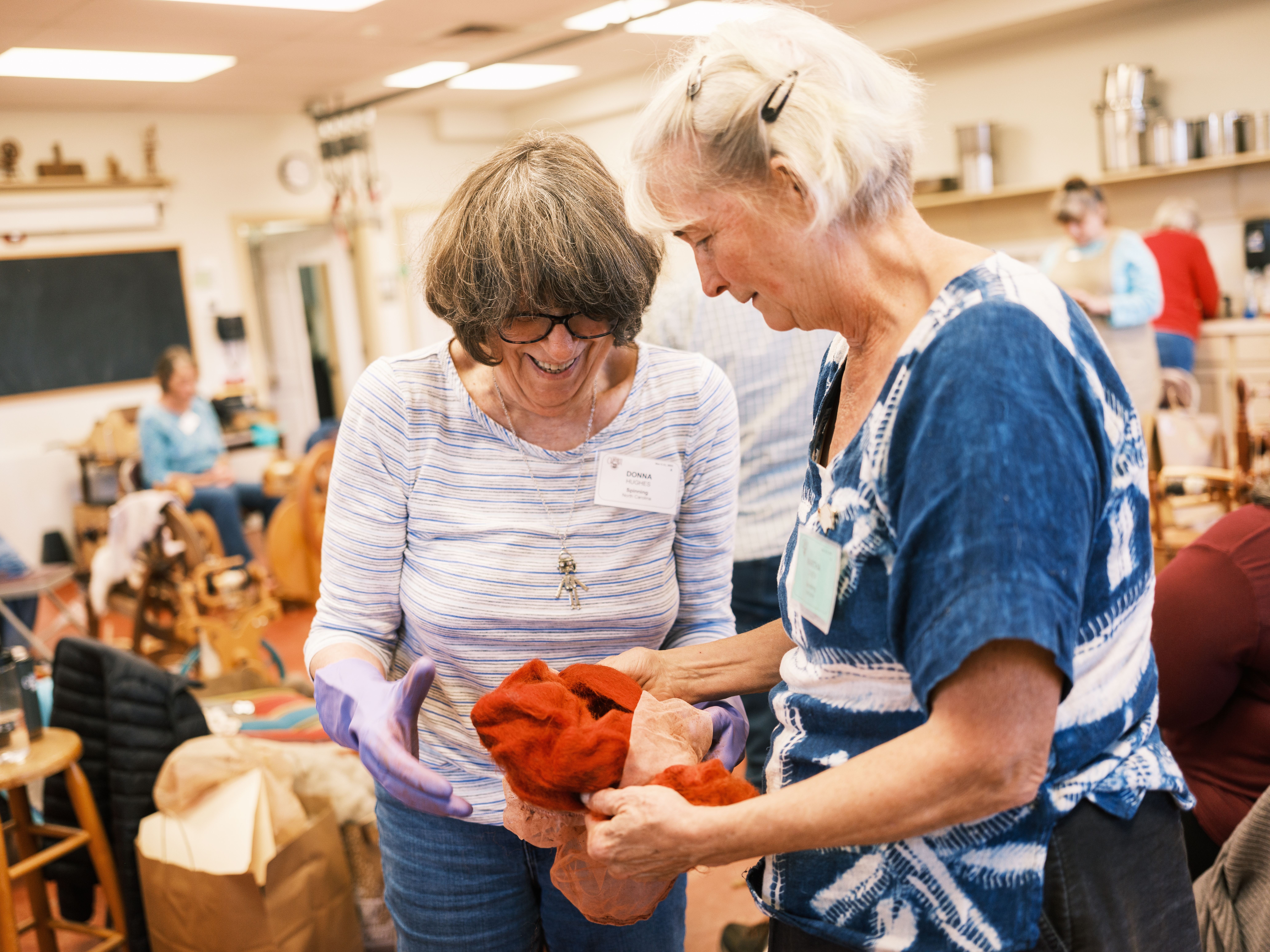
Martha teaching
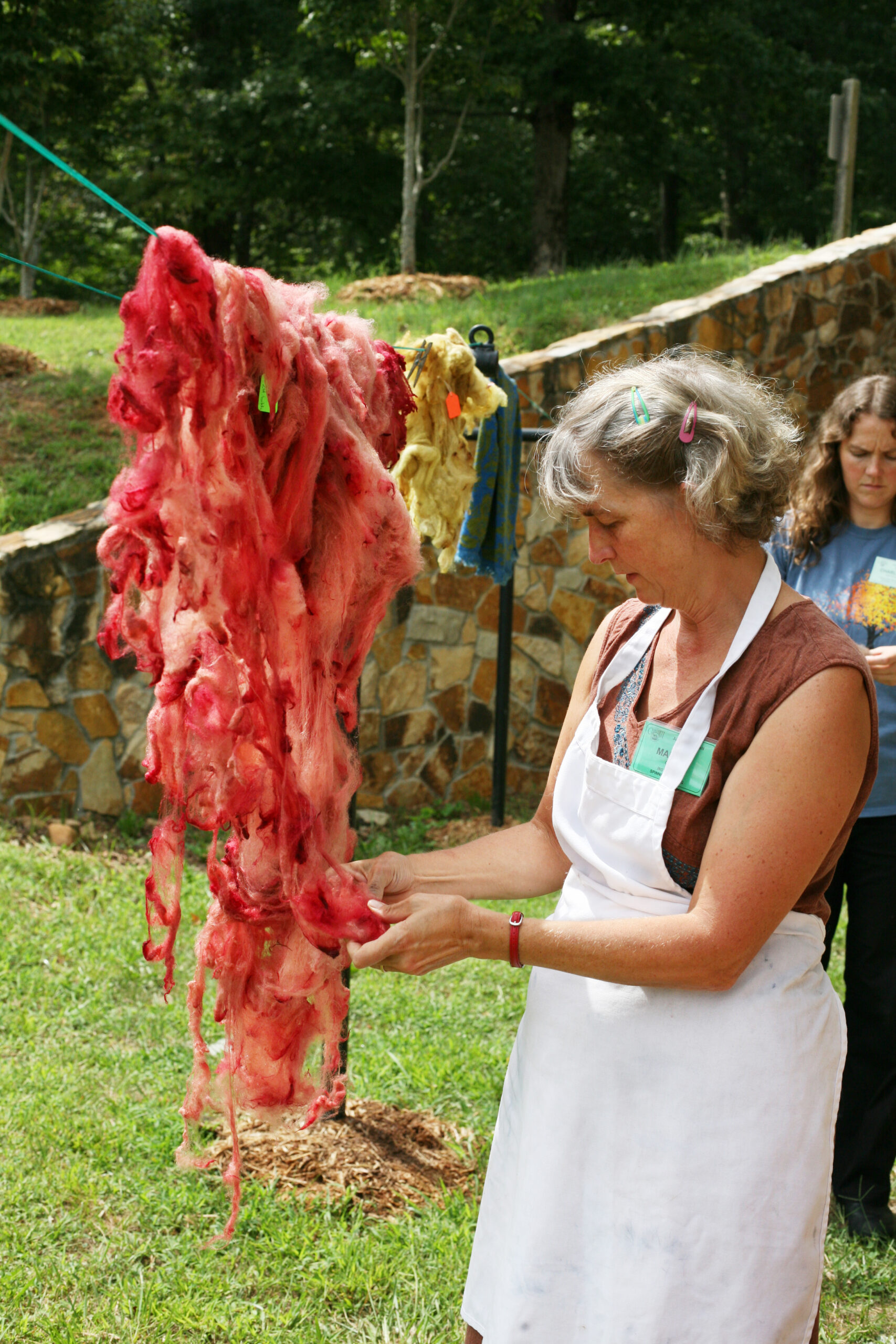
JCCFS: What can students expect to leave your class with?
MO: Learning to spin is an intermediary craft that sits between old time technique and many eventual uses and outcomes. We will cover prep for spindle spinning and also learn to do things efficiently and think of how to make a wheel of this style from found objects. The how to’s of spinning include details about sheep and wool, washing and preparing fleece, tools and equipment tune ups. Spinning is an intuitive craft, and I have many ways to get folks started. This class is for those with just basic curiosity as well as those with some experience that want to try, or make, or acquire a great or walking wheel to add to own their own skills. It is also for historical writers, singers, poets and storytellers! What does the wheel say? What do the hand cards say?
JCCFS: What is your favorite aspect of the John C. Campbell Folk School?
MO: I often say, this is my Folk School, the one that empowered me and helped me be the big, strong Martha I am today. I have witnessed many ideas taking shape here in my time with the school. Dedicated studios are a big deal! This sounds odd, but I love to stand by in all weathers and understand two very important things: the importance of wool and the importance of a horizon line, sometimes hard to define in the southern mountains!
The spirit is good at the John C. Campbell Folk School, a small place with big ideas. I like to help folks question, try things, understand the big gift of taking the time to study, and the gifts of wool. Coming to a place as a teacher or as a student puts you into a place with connections; there are no strangers and no question is silly. Our folks work hard to make each class an energizing experience and I have been proud to be a part of it. Oh yes, and there is music, and there is dancing, and good food to eat!
JCCFS: Where do you draw inspiration from for your work?
MO: I endlessly gaze at the trees and the sky and think, “How am I going to get that into my yarn?” I am a knitwear designer who harvests wool and dyestuffs to knit one of a kind garments. So, slow fashion only begins to describe it all. I walk and study and look at historical artifacts and try to dream, then make a list and a path, because it takes a long while to get from the start of the idea to the finished yarn and then personalized garment. I have to leave a trail and many reminders to get to the finish. I call it Visible Perseverance. My life (and maybe yours?) is in your handspun individually designed garments.
JCCFS: What’s one piece you’ve made recently that you’re the most proud of?
MO: Well, the sweater named “Visible Perseverance,” of course. It started with an idea during a tough passage in my personal life. But, though it was knitted here in western North Carolina by my own hands, from the handspun wool off my own sheep dyed in my dye pots, it is related to but not actually a part of our “Spindle and Wheel” class.
JCCFS: What tips would you give an aspiring spinner and dyer?
MO: Get a blank book that remembers everything and start making notes of ideas, drawings of potential work or ideas, and anything that helps you remember what you did when you finally get done typing on the computer at work, so that you can go make all yarns and colors match. Be friendly and adaptable and try to give as much as you receive. Take an idea, work at it, and work at it again. Find the best outcome by practice; nothing is great unless it takes a while to develop. Stay calm about learning skills, if you mean to go on as an artisan, learn all the parts and choose what suits you and fits in your life. Don’t drink too much beer!
JCCFS: Where can folks find you if they want to keep in touch?
MO: I’m on both Facebook and Instagram as @marthaowenwoolens.
JCCFS: Anything else you want to add?
MO: I really mean it: I have never gotten tired of my life. If I get tired of one part, I go and do another! There are so many many parts from sheep to finished garment. But all learning is looking back, so pause and reflect as you can. My classes help with where to start and what I have learned to do, mostly the hard way, for my own systems and comforts. I am glad to tell secrets to all who are interested. There is so much to tell.
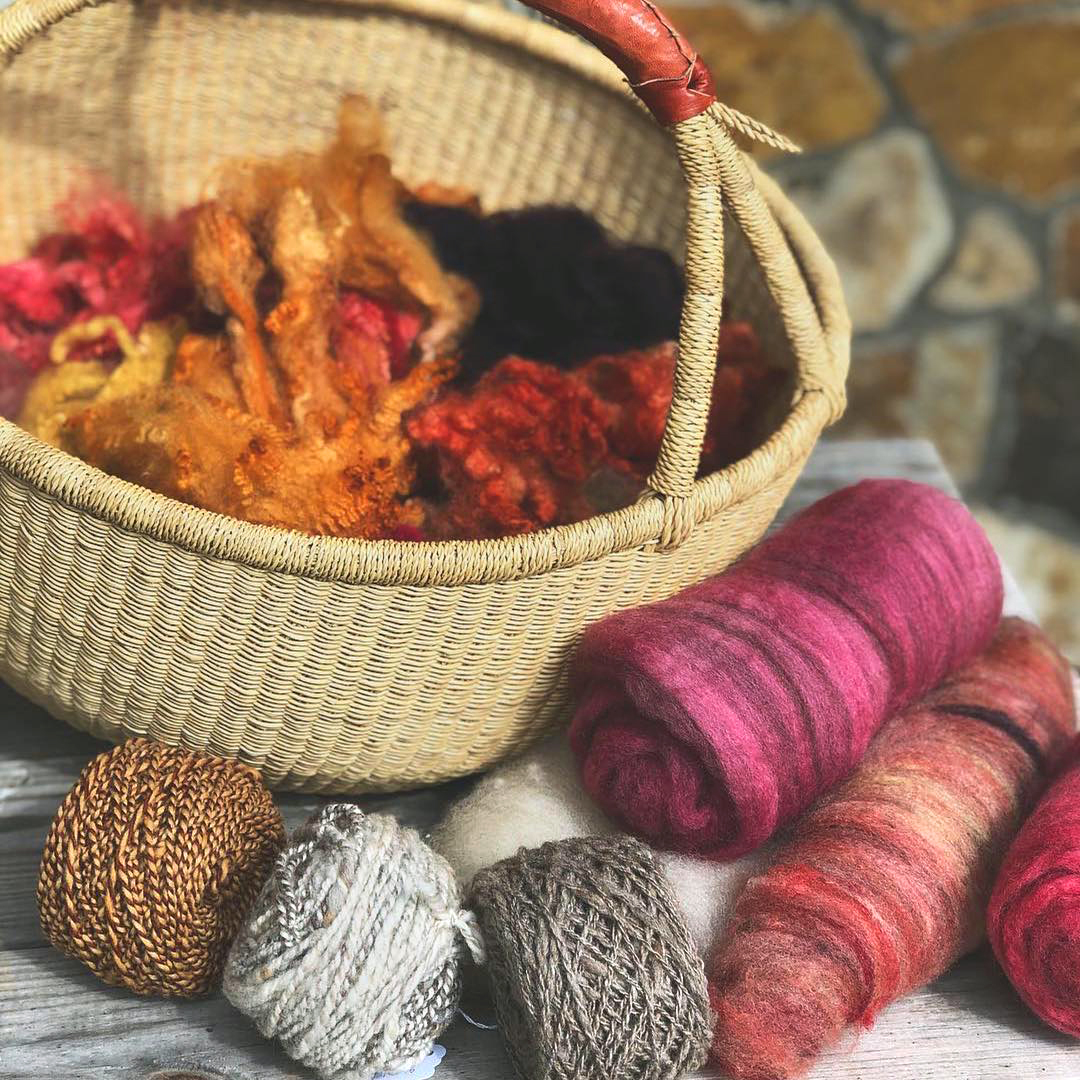
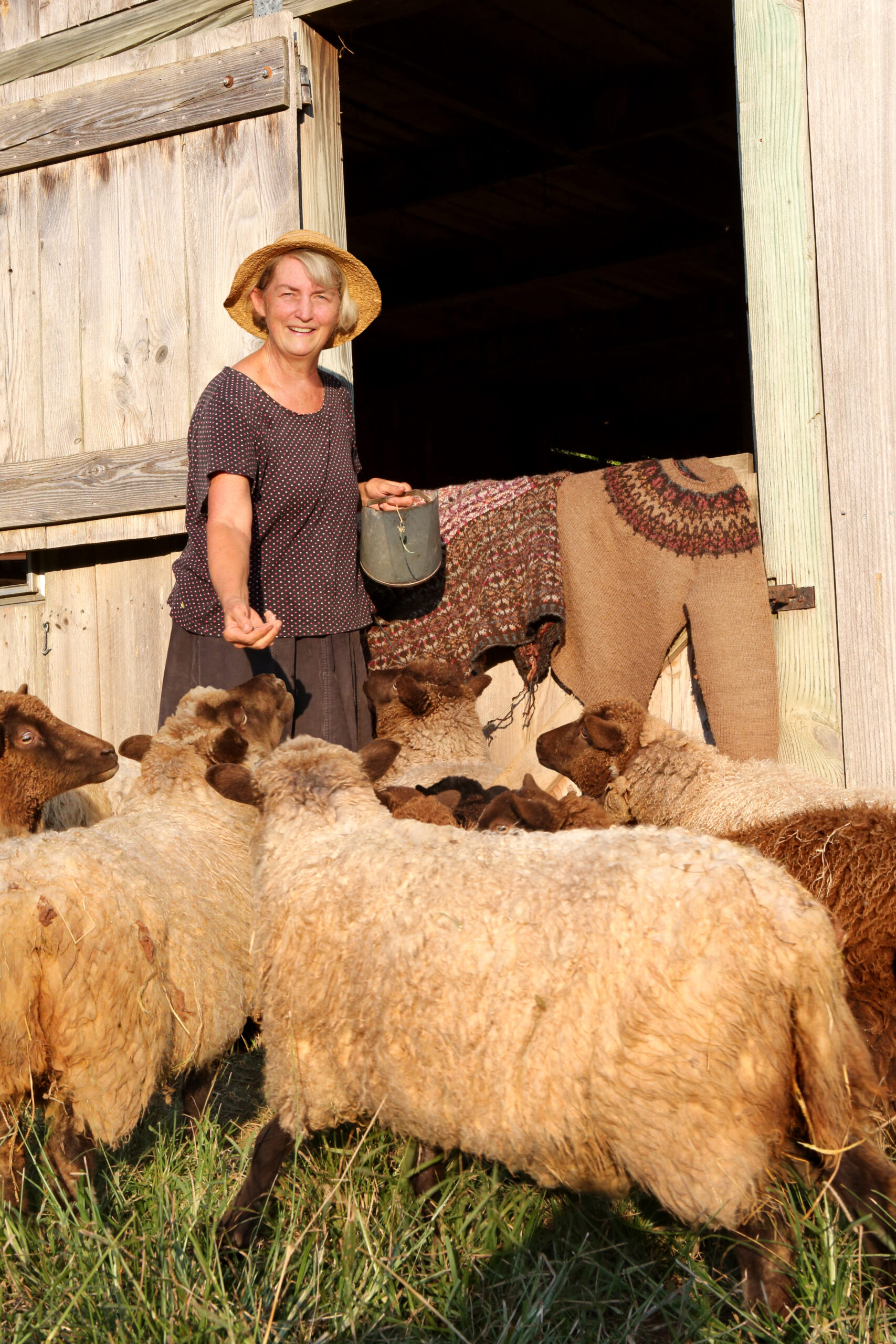
Martha with her sheep!
Upcoming Class with Martha
Spindle And Wheel
December 5-8, 2023
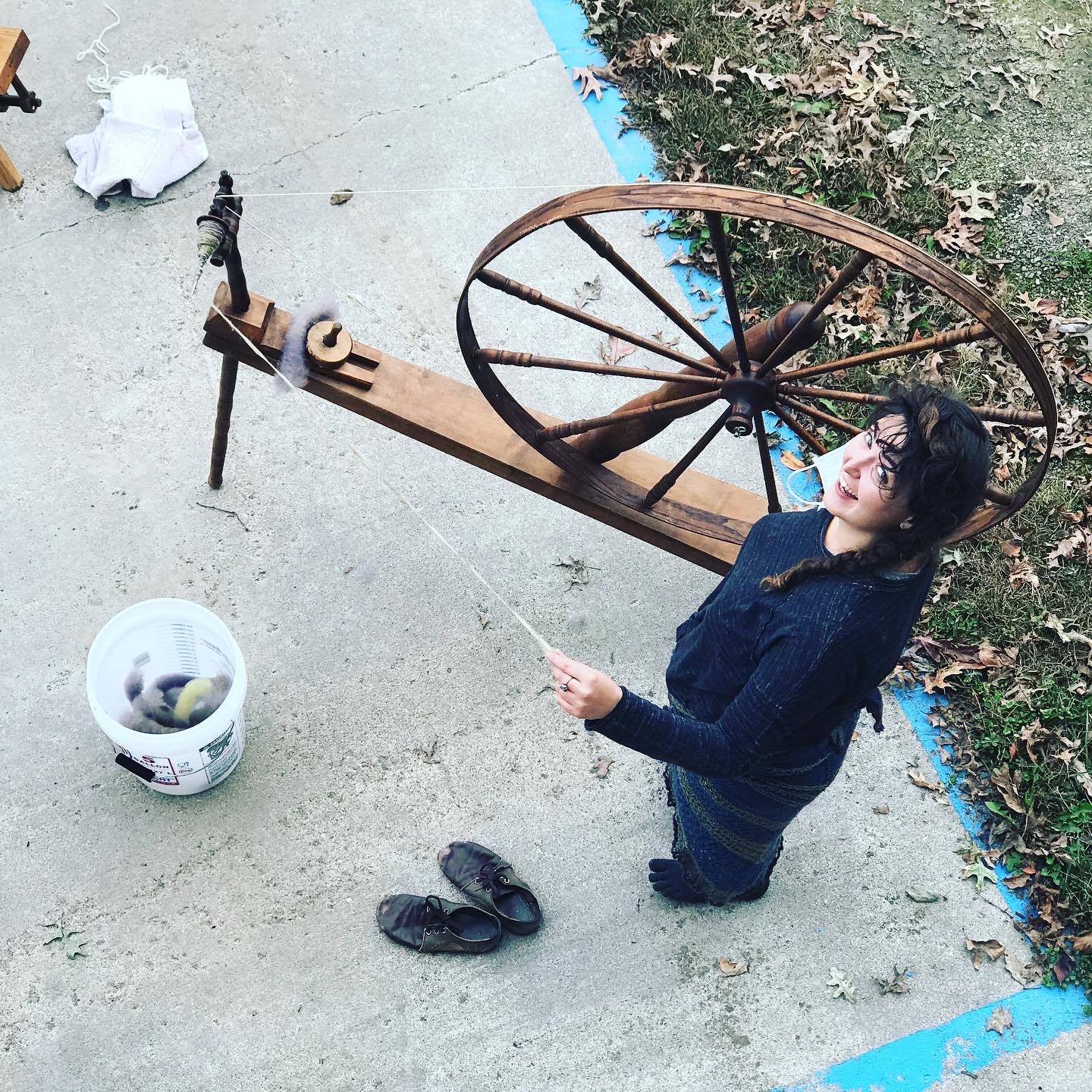
About Martha Owen




No Comments